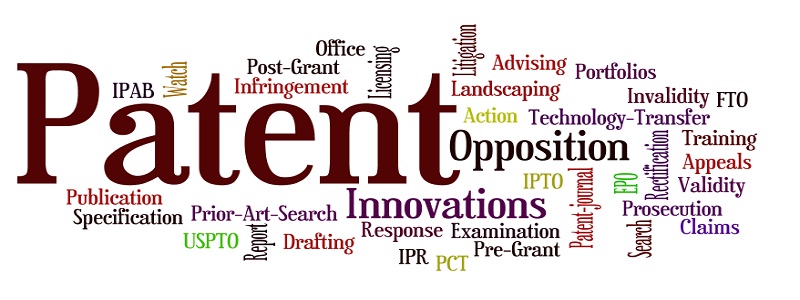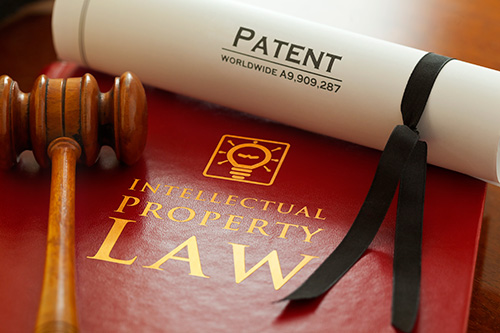Registration procedure for patents in Vietnam
What is the patent in Vietnam?
1. Definition
Invention means a technical solution in the form of a product or a process which is intended to solve a problem by application of laws of nature.
An invention shall be protected by mode of grant of invention patent or utility solution patent.
2. Technical solutions
Technical solution – the object protected under the name of an invention is a set of necessary and sufficient information on technical methods and/ or technical means (application of natural laws) which is intended to solve a mission (a problem).
Technical solutions may be in one of the following forms:
(i) Products in the form of objects, for example, tools, machines, equipment, components, circuits…, expressed in set of information that identifies an artificial product characterized by technical signs (characteristics) of structure, that product functions (utilizing) as a means to meet certain needs of human; or products in the form of substances (includingsimple substances, compounds and mixtures), for example materials, food, pharmaceuticals …, expressed in set of information that identifies an artificial product characterized by technical signs (characteristics) of the presence, proportion and state of the elements, functioning (utilizing) as a means to meet certain needs of human; or products in the form of biological materials, for example genes, genetically modified plants or animals …, represented by a collection of information about a product containing modified genetic information under human impact, capable of self-replicating;
(ii) Process or method (production process; diagnostic, predictive, test, process, etc.) is represented by a set of information that determines how to conduct a process, a specific job is characterized by signs (characteristics) of the sequence, participants, measures and means of performing operations to achieve a certain purpose.
3. General conditions for invention or utility solution eligible for protection
An invention shall be protected by mode of grant of invention patent when it satisfies the following conditions:
– Being novel;
– Involving an inventive step;
– Being susceptible of industrial application.
Unless it is a common knowledge, an invention shall be protected by mode of grant of utility solution patent when it satisfies the following conditions:
– Being novel;
– Being susceptible of industrial application.
4. The following subject matters shall not be protected as inventions
The following subject matters shall not be protected as inventions accordance with Article 59 of the Intellectual Property Law:
– Scientific discoveries or theories, mathematical methods;
– Schemes, plans, rules and methods for performing mental acts, training domestic animals, playing games, doing business; computer programs;
– Presentations of information;
– Solutions of aesthetical characteristics only;
– Plant varieties, animal breeds;
– Processes of plant or animal production which are principally of biological nature other than microbiological ones;
– Human and animal disease prevention, diagnostic and treatment methods.
How to write a patent specification?
Title of the invention. The title of the invention is designed to describe the essence of the invention in a few words. The title must clearly and concisely indicate the subject matter to which the invention/innovation relates and must be the same as the title on the Request Form and Abstract.
Cross-reference to related applications. In this section, the applicant lists any provisional patent applications that they are claiming priority to, or if the application is a continuation, the parent application number(s). This is a general broad statement describing the art or technology to which the invention/innovation relates.
Background of the invention. The background of the invention is typically drafted for a jury audience. Selected art in the field is discussed to emphasize differences with the current invention, and to point needed improvements that are provided by the current invention. This should include a summary of any background art known to the applicant which may be useful for understanding the invention/innovations.
Summary of the invention. The summary of the invention, which is distinct from the abstract, is meant to discuss the invention (i.e., the claims) rather than the disclosure as a whole. Often, the summary will discuss advantages of the invention or how it solves the problems existing in the art, such as those presented in the background of the invention. This normally includes a statement of the essential and optional features of the invention and any advantages of the invention or innovation over the known art
Description of the drawings. If drawings are included in the application, a brief description of each drawing is required.
Detailed description of the invention. The detailed description of the invention is the meatiest section of a patent. Its purpose is to adequately and accurately describe the invention. There are generally two sections:
- A general explanation of the invention and how to practice it. The invention is described in its broadest sense, to show that the inventors have a broad view of the scope of the elements. Often, preferred embodiments of the invention are described. Such embodiments are generally more limited versions of the broadest concept and are provided for support for a fall-back position of narrower claims if the broader concept is not patentable. Definitions of key terms are often provided and are extremely important in interpreting the scope of the claims.
- Specific examples of how to practice the invention. A patent application does not require examples, however in practice, examples can often assist in showing patentability (e.g., enablement). The examples may or may not have been performed by the inventors. “Working” examples present completed undertakings. “Prophetic” examples are hypothetical undertakings and are always written in the present or future tense. Typically, the examples demonstrate practice of one or more specific embodiments of the invention.
(Many new readers find the purposes of these two sections confounding and assume that the examples set forth how the invention will be practiced. Rather, examples are meant only to illustrate, but in no way to limit, the claimed invention).
The Claims
The major function of the claim or claims is to clearly define the scope of protection granted. The claims must be clear and concise and must be supported by and agree with the invention/innovation disclosed in the descriptive part of the patent specification.
The claims are probably the most important part of the patent specification and, because of their legalistic nature, are probably the most difficult to prepare. For example, it is possible for the patent specification to describe a commercially successful invention but, because of poor or incorrect drafting, the claim (s) may be invalidated because they are drafted too broadly resulting in a lack of newness or inventive step or, conversely, the claims may be drafted too narrowly thus making it easy for competitors to benefit from the invention without infringing the claims.
The claims should commence on a new page and each claim should be written as a single sentence. Whenever appropriate the claim should define the invention/innovation first by indicating the background prior art, followed by a “characterising” portion which defines the features of the invention/innovation which, in combination with the prior art features it is desired to protect. Each technical feature mentioned in the claim (s) and illustrated in the drawings should, wherever possible, be followed by its reference numeral i parenthesis. Only one claim is allowed in a utility innovation specification whereas a plurality of claims are allowed in a patent specification. However, the claims of a patent specification must relate to the same invention. An example of a set of patent claims can be found at Sample of Patent Specification.
Abstract. The abstract is a brief summary of the entire specification.
PATENT PROTECTION TIPS FOR TURKEY

We would like to let you know that New Turkish Industrial Property Law (6769 numbered IP LAW) has been enacted at the beginning of 2017 in TURKEY and there are several new implementations which are very important to protect your patents.
Firewall Cisco| | Juniper switch | Router cisco | thiết bị mạng cisco | thiết bị chống sét | Bộ lưu điện UPS
So, the following points are the major points that shall be taken into consideration while patent registration process and afterwards;
- Patents and utility models can be protected by national filing, national phase of EP and PCT.
- UN-EXAMINED PATENT SYSTEM which was available at the previous law has been abolished and only PATENT and UTILITY MODEL protection are allowed with the new law.
- SEARCH PROCEDURE is brought by the new law for UTILITY MODEL applications but there will be no examination procedure.
- Novelty and industrial applicability are required for UTILITY MODELS. (no need to exceed state of art).
- Patents are protected for 20 years and utility models for 10 years.
- Oppositions can be filed against patents within 6 months from publication of grant but there is no opposition procedure against utility models. (Cancellation of utility models can only be obtained with the courts.)
- Most of the procedures (applications, registrations, oppositions, annuities, assignments, mergers etc.) are completed with online action and usually the originals of the documents are not required. But, the original shall be filed if Turkish Patent Office requests in case of doubt.
New Amended Intellectual Property Law 2017 of Lao
New Amended Intellectual Property Law 2017 of Lao.
Please see the attached file for details: Law on Intellectual Property (Amended) 2017 (ENG) (Proofread)(CLEAN)
Intellectual property and technology transfer
SB LAW provides the full range of intellectual property services covering patent, trademark, industrial design, copyright and domain name, enforcement and commercial exploitation of IP rights.
Our group of IP Lawyers and technology specialists is always willing to assist whether you are seeking advices how to begin protecting your unique ideas or to deal with the most complex issues in the various aspects of IP.
Our IP practice covers not only Vietnam but also other countries in Asia and other regions where our associated offices locate. We bring to Client valuable services for patentability research, trademark, industrial design, patent registration, copyright protection, watching and investigation of IP right Infringement, assistance in negotiation and obtaining IP Right Licensing, Franchising, Technology Transfer as well as commercial exploitation of IP Right Objects.

Our major clients SBLAW is a perfect choice for large and medium-sized businesses, local and international corporations and organizations.
SBLAW is a full-serviced law firm, dedicating to many clients who have been working with us for many years, among Microsoft, Big C, IBM, AIA, TOTAL, ExonMobil, ESCO, HTC, CSC, LG, DBS bank, ICBC, ING Bank, Hong Leong Bank, Bridge Mind Consulting Pte., Ltd, Luxasia, DSM Singapore Industrial Pte., Ltd, Nippon Steel, Innovar Vietnam, SmartEbook.com, UBM, Netrove Venture, Argentina Embassy in Vietnam, MSH (non-government organization), ADRA, Military Bank, VICEM, VINACONEX, VNPT, VTC Online, VSTV, Vinacomin, Trung Nguyen Group, Kinh Do Group Corporation, HIPT, Viettel Real Estate, VietsovPetro, VNPT, Viettel, Tin Nghia, Eurowindow, Purolite, Ritavo, etc.
We confirm that with many years of experience in the field of Intellectual Property, SB Law’s lawyers are fully capable to advise and represent for your company in this matter.
In particularly, we are the very first law firm company can deal with the infringement of company name since the Decree on this issue has just been issued.
Major IPR Deals
- Acting for Microsoft to handle copyright infringement in Vietnam. We are their local counsel for IP infringement in Vietnam.
- Acting for a Japanese Company to handle copyright infringement in Vietnam
- Acting for a Vietnamese software company to handle copyright infringement of a Vietnamese company in Vietnam
- Settling the infringement action of a Switzerland company against a Vietnamese company in Vietnam. The company is one of the leading companies over the world as well as in Vietnam in the field of manufacturing electric equipment;
- Acting for a Singaporean farmer product company to handle the infringement of their registered trademark in Vietnam
Acting for an American food company to handle the infringement of their registered trademark in Vietnam.
- Acting for a Taiwanese game to handle copyright infringement to many websites’ owners in Vietnam.
- Acting for a Hong Kong Mobile company in handling infringement of their products in Vietnam
- Acting for an American ion exchange resins company in handling counterfeit products caused by a trading company in Ho Chi Minh City
- Acting for an American construction material company to handle infringement of their trademark caused by breaching contract of the company partner in Vietnam.
- Acting for A Japanese company in a case relating to Copyright Infringement over its handmade glasses in Vietnam;
- Helping Germany and Japanese companies in copyright disputes with other companies.
- Helping Copyright Association of Vietnam (VIETRRO) in handling copyright infringement in Vietnam
- Helping an American company to claim back their trademark by opposing a trademark filed by a Vietnamese company
Major prosecution cases
- Helping numerous Japanese clients to register patents and trademarks in Vietnam.
- Acting for Vietnamese Television Online Company in negotiation with Sony Music
- Entertainment relating to use of music works in Vietnam;
- Helping top500 companies in Vietnam to register trademark in Vietnam and globally.
- Helping companies from China, Taiwan, Korea, German and Russia to register patents in Vietnam.
- Helping a Japanese company to register more than 300 art works in Vietnam
- We are top 10 IP firms having the most trademark applications in NOIP for years.
Our Awards
The professional performance and services provided by SBLAW has been highly appreciated by both local and international clients.
- SBLAW is proud to be awarded by ASIALAW Profiles – the world a reputable organization on ranking the leading domestic law firms in Asia Pacific. The ranking are based on the recommendations of in-house counsel at the world’s most prominent companies and financial institutions, as well as the leading lawyers, attorneys and solicitors in each legal market.
- From 2012 to 2018, SBLAW received honor award by The Legal 500, the most comprehensive worldwide coverage currently available on legal services providers in over 100 countries. SBLAW emerged winner among many other leading law firms in the country for our excellent quality of legal service.
- In 2012, SBLAW continued to be ranked for the professional achievement and experience in finance and banking by IFRL1000 (the Guide to the World’s Leading Financial Law Firms).
- In November 2012, SBLAW had one more feather to its cap, for being selected as one of the five law firms awarded by the People’s Committee of Hanoi for the achievement in consultancy to protect the rights and benefits of State and citizens.
- In 2013-2017, SBLAW continued to be ranked for professional achievement and experienced in finance, banking and Intellectual Property by The Legal 500.
- In 2018, SBLAW was ranked in the TOP 1 in the Intellectual Property by the Legal 500
- • From 2013 to 2017, Mr. Pham Duy Khuong – is recommended as Leading Lawyers in IP in Vietnam by Legal 500.
Inquiry about Registration of Computer Software Copyright in Vietnam
Question: Our company from USA intends to register computer software copyrights in Vietnam. We wonder if you can assist us on this matter. If yes, please advise your quote, time frame and the documents thereof for our reference.
Looking forward to your reply.
Answer: Thanks for your email of today regarding the subject matter. Regarding your enquiries concerning the subject matter, we would like to advise you on procedure and our updated fee schedule in relation to the copyright registration proceeding in Vietnam as follows:
1.Schedule of fee for registering copyright for computer software:
1.1 Copyright information
– Types of works: computer software (program)
1.2 Fee schedule
| Description | Official fee
(USD) |
Attorney’s fee
(USD) |
| 1. Fee for filling 01 copyright application for a computer software program | 30.00 | 220.00 |
| 2. Communication costs | 30.00 | |
| Sub-total: | 280.00 | |
| 5%VAT: | 14.00 | |
| Bank charge: | 20.00 | |
| Total: | 314.00 | |
Noted: The above fees are inclusive of 5% VAT, communication costs and bank charges.
2.Procedure and timeline:
– The duration of copyright application is around 20 -30 working days.
3.Required documents and information:
The client provides:
– 02 Notarized copies of Certificate of Business Registration of the Owner
– 02 copies of the author’s ID or passport
– 02 Power of Attorney (POA) (SBLAW’s form)
– 02 statutory declarations of the author(s)
– 02 volumes of written explanations of “software program …” consist of 2 parts: the first part is the content of software and the last part is the software code (5-7 pages). Their cover must clearly indicate the software title, owner’s name and seal of the company.
– 02 recording disks of registration software content (including code). Outside the disk casing must clearly indicate the software title, owner’s name and seal of the company.
SBLAW provides:
- 02 declarations of the author and the owner (If the author is the owner)
- 02 commitments of the author(s) of software program
- 02 Commitments of using image (If any)
- 02 assigned decision (If the staff of the company/the owner is assigned tasks to program a software program)
- 02 contracts of lease of programming a software (If the owner hired a third party to program a software program)
We hope the above is of your assistance. Should you have any inquiry, please do not hesitate to contact us.
INTELLECTUAL PROPERTY RIGHTS
Vietnam is a long time signatory to the Paris Convention, the Madrid Agreement on International Trademark Registration, and the Patent Cooperation Treaty (PCT) and became a member of the World Intellectual Property Organization in 1976. On 27 June 1997, Vietnam entered into an Agreement on Copyright with the US. According to the Vietnam – US Bilateral Trade Agreement, Vietnam is also obliged to adhere to the Berne Convention.
The National Office of Industrial Property (NOIP) is the authority responsible for the registration of industrial property and the resolution of disputes with regard to industrial property in the first instance. Foreign organizations and individuals who seek to register their industrial ownership should file their applications through an authorized agent, who will transfer their application to the NOIP. Also, trademark license agreements must be registered with the NOIP. The Office of Copyright Protection under the Ministry of Culture and Information has also been established and is responsible for the protection of copyright. Works may be registered with the Ministry of Culture, Sports and Tourism.
Currently, patents are protected for a period of 20 years. A certificate of utility solutions may be granted for 10 years. A certificate of industrial design is granted for five years and may be renewed every five years; however, the total effective period of a certificate cannot exceed 15 years. Certificates of trademarks are granted for 10 years with no restrictions on the number of renewals. Some moral rights of copyrighted works are protected indefinitely, and other rights are protected up to 50 years for post mortem actors.
What are the new regulations governing intellectual property?
There are some new regulations on intellectual property area in respect of (i) imposition of administrative sanctions against intellectual property, (ii) examination of application for registration of industrial property rights, (iii) protection of plant variety rights and (iv) innovation charter. These regulations are stipulated in the following legal documents:
- Decree No. 131/2013/ND-CP dated 16 October 2013 regarding settlement of administrative violations on copy rights and related rights
The Decree provides for administrative violations of copyright and related rights, sanctions, power and procedures to deal with the violations.
- Decree No. 99/2013/ND-CP of 29 August 2013 regarding settlement of administrative violations in respect of industrial property
The Decree provides for administrative violations in industrial property, sanctions, power and procedures to deal with the violations.
- Circular No. 05/2013/TT-BKHCN dated 20 February 2013
The Circular provides for amendments on regulation on examination of application for registration of industrial property rights such as time-limit for examination of forms and contents of the applications, the first-to-file basis, supporting documents regarding registration of trademarks.
- Circular No. 16/2013/TT-BNNPTNT dated 28 February 2013
The Circular provides for the procedures for registration of rights to plant varieties such as application forms, application fees, representative agencies and evaluation agencies.
- Circular 18/2013/TT-BKHCN dated 25 October 2013 regarding innovation charter.
The Circular provides for criteria and procedures for recognition of innovation charter.
Adopting the Vietnamese Version of the Nice Classification of Goods and Service 11-2018
Applicants who do not classify the designated goods and services correctly in accordance with the Vietnamese version of the NCL 11-2018 will have their goods and services reclassified by NOIP and have to pay additional fees according to the regulations.
The Vietnamese translation of the NCL 11-2018 can now be found in the Industrial Property Official Gazette no. 356B published by NOIP on November 27, 2017, and on the websites of NOIP (www.noip.gov.vn) as well as the Ministry of Science and Technology (www.most.gov.vn).Switch Cisco | Router Cisco | Cisco chính hãng | Máy chủ Server
Notice No. 10147/TB-SHTT dated November 24, 2018 can be downloaded here
Any matter arising during implementation of the NCL 11-2018 should be promptly informed to NOIP for resolution./.
THE AMENDMENTS TO THE NCL 11-2018 CAN BE DOWNLOADED HERE.
LIST OF GOODS AND SERVICES IN ALPHABETICAL ORDER OF THE NCL 11-2018 CAN BE DOWNLOADHERE AND DOWNLOADED HERE.
Source: http://noip.gov.vn/web/noip/home/en?proxyUrl=/noip/cms_en.nsf/(agntDisplayContent)?OpenAgent&UNID=EA01B6B323F878DB4725821A004E1E98
Vietnam: Amendments In Intellectual Property Laws In Vietnam
Much awaited fourth amendment to the IP laws of Vietnam finally comes into force today i.e. on January 15, 2018. Circular No. 16/2016/TT-BKHCN (also called Circular No. 16), which was issued on June 30, 2016 by the Ministry of Science and Technology of the Government of Vietnam which amends as well as supplements a number of articles of Circular No. 01/2007/TT-BKHCN (also called Circular 01). The amended circular no. 16 is a critical guidance document for implementing of IP laws in Vietnam. These amendments as already discussed are effective from January 15, 2018.
Firewall Cisco| | Juniper switch | Router cisco | thiết bị mạng cisco | thiết bị chống sét | Bộ lưu điện UPS
The amended circular will have a major impact on the Intellectual Property practice followed in Vietnam as it modifies almost 49 out of 67 points present in the currently followed circular no. 1. Further, these modifications will resolve certain issues and concerns and align the IP laws of Vietnam with International IP system.
Source: http://www.mondaq.com/x/664250/Trademark/Amendments+in+Intellectual+Property+Laws+in+Vietnam
Vietnam: ASEAN Patent Examination Co-Operation (ASPEC) Program
The ASEAN Patent Examination Co-operation (ASPEC) is the first regional patent work-sharing program among ASEAN IP Offices, with objective of reducing duplication of the patent search and examination (S&E) work, thereby saving time and improving the quality of S&E results.
Currently, almost all the ASEAN member states (AMS) are part of this program includes: Brunei Darussalam, Cambodia, Indonesia, Lao PDR, Malaysia, Philippines, Singapore, Thailand and Vietnam.
With ASPEC, one application claims priority from another or both applications claim priority to the same basis application. Although the S&E results carried out by one Office is not binding on other Offices, it is of persuasive value. In other words, the S&E results of another AMS IP Office serves as a useful reference in producing quality reports.
In addition, ASPEC operates in the English language on all participating AMS IP Offices, so it is time-saving and resources. Besides, there is free-of-charge to the applicant at any participating AMS IP Offices. However, local search and examination fees at AMS IP Offices will still apply.
Some of AMS IP Offices allow the ASPEC request be filed when responding to an adverse report and, in accordance with the National Office of Intellectual Property (NOIP), even any time before a final determination of grant or refusal in Vietnam.
Firewall Cisco| | Juniper switch | Router cisco | thiết bị mạng cisco | thiết bị chống sét | Bộ lưu điện UPS
Eligibility
All patent applicants are allowed to participate in the ASPEC program, if they satisfy any one of the requirements under the ASPEC system works. For the purposes of illustration, below is a graphical representation of ASPECs scenarios. And it represents a Corresponding Application with respect to a Vietnam Application, if the ASPEC Request Form is filed with the NOIP.
Required Document
Patent Applicants shall be met just one common form – the ASPEC Request Form, without the need to pay any fee. The following English documents may be requested and furnished together with the said form:
- A copy of the search report (if required);
- A copy of the examination report;
- A copy of claims referred to in the examination report; and
- A claim correspondence table (optional).
Where the above-listed documents are not filed in English language, patent applicant may file a verified or, where required, a certified English translation of the documents with the relevant patent office.
In Vietnam, the NOIP requires patent applicants to file a verified English translation only in cases “when there are contradiction(s) or doubts or the likes in the content of the ASPEC documents”.
( March 2, 2017 )
The content of this article is intended to provide a general guide to the subject matter. Specialist advice should be sought about your specific circumstances.
Source: http://www.mondaq.com/x/660560/Patent/Asean+Patent+Examination+CoOperation+Aspec+Program
The charges for the Trademark registration in Vietnam
Question: Please send us the requirements, timeline and the charges for the Trademark registration in Vietnam.
Answer: Concerning the subject matter, as the leading Vietnamese law firms, we are capable of assisting you with handling all IP matters in Vietnam in an efficient and cost-competitive manner.
Regarding your enquiries concerning the subject matter, we would like to advise you procedure and our fee schedule in relation to trademark registration in Vietnam as follows:
1.FEE SCHEDULE
1.1. Trademark information
– Trademark: (Please specify)
– Class(es): (Please specify)
1.2. Fee schedule
In Vietnam, multi-class application is applicable. The basic fees are calculated based on the number of class of goods/services (G/S) in each application as well as the number of products designated in each class in the application.
Below is the breakdown of charges for registering a trademark in Vietnam, in a smooth case, for your considerationSwitch Cisco | Router Cisco | Cisco chính hãng | Máy chủ Server
1.2.1. Trademark searches (Optional)
Trademark search for 01 trademark in one class
| Description | Official Fees
(USD) |
Attorney’s Fees
(USD) |
| 1. Fee for conducting search 01 trademark inone class (optional) | – | 80.00 |
| 5% VAT: | 4.00 | |
| Bank charge: | 25.00 | |
| TOTAL | 109.00 | |
In words: One hundred and nine US Dollars only.
Note: The above-quoted fees include 5% VAT of our service charge, bank charges ($US25.00)
1.2.2. Trademark registration
Trademark registration for one trademark in one class:
| Description | Official Fees
(USD) |
Attorney’s Fees
(USD) |
| 1. Fee for filing an application and issuing certificate for one class of goods/services within 6 items* | 87.00 | 220.00 |
| – for each additional Class from the 2nd one (if any) | 45.00 | 120.00 |
| – for each additional goods/services from 7th one (if any) | 10.00 | 4.00 |
| – Fee granting a registration certificate for each additional class from the 2nd one (if any) | 8.00 | 40.00 |
| Sub-total (with *): | 307.00 | |
In words: Three hundred and seven US Dollars
Note: The above-quoted fees exclude 5% VAT of our service charge, bank charges ($US25.00) and actual communication costs ($US30.00). In case of any office action or possible opposition which may occur during the application proceedings, an additional charge may be incurred, upon your approval.
2. Procedure and timeline
2.1. The duration of a trademark searches is around 10-15 working days.
2.2. The duration for a trademark application from mature to proceed to registration is around 14-18 months from the filing date, involving these stages
(1) examination as to formality and publication on the Gazette (3-4 months);
(2) examination as to substance (9-12 months) and
(3) issuance of registration certificate for the registered mark (2-4 months).
Kindly note that the term for registration process normally takes longer to several months in practice due to the workload of the NOIP and the slow examination process by the NOIP’s examiner.
3. Required documents and information
– Name and address of the Applicant
– List of Goods/Services
– Specimen of the applied mark (in e-copy only)
– An original Power of Attorney which is simply signed by the Applicant. No need notarization or legalization (SBLAW’s form).
Please be informed that a scanned/faxed copy of the Power of Attorney is acceptable upon filing provided that the original copy is submitted within 01 month from the filing date; One original Power of Attorney can be used for filling one or more applications.
Quotation for Trademark Registration in Viet Nam
Question: With regards to our interest to register a trade name in Vietnam. Please quote.
Answer:
Concerning the subject matter, as one of the leading Vietnamese law firms, we are capable of assisting you with handling all IP matters in Vietnam in an efficient and cost-competitive manner. For your further information, we cordially invite you to visit our official website at www.sblaw.vn. We hope to build up a long-term business relationship with your esteemed firm in the next time.
Regarding your enquiries concerning the subject matter, we would like to advise you procedure and our preferred fee schedule in relation to trademark registration in Vietnam as follows:
1. FEE SCHEDULE
1.1. Trademark information
– Trademarks: As provided
– Class(es): Spa services
1.2. Fee schedule
In Vietnam, multi-class application is applicable. The basic fees are calculated based on the number of class of goods/services (G/S) in each application as well as the number of products designated in each class in the application.
Below is the breakdown of charges for registering a trademark in Vietnam, in a smooth case, for your consideration
1.2.1. Trademark searches (Optional)
Trademark search for 01 trademark in one class
| Description | Official Fees
(USD) |
Attorney’s Fees
(USD) |
| 1. Fee for conducting search 01 trademark inone class (optional) | – | 100.00 |
| 5% VAT: | 5.00 | |
| Bank charge: | 25.00 | |
| TOTAL | 130.00 | |
In words: One hundred thirty US Dollars Only
Note: The above-quoted fees include 5% VAT of our service charge, bank charges ($US25.00)
1.2.2. Trademark registration
Trademark registration for one trademark in one class:
| Description | Official Fees
(USD) |
Attorney’s Fees
(USD) |
| 1. Fee for filing an trademark application for the first class of goods/services within 6 items |
65.00 |
190.00 |
| 2. Fee for granting a registration certificate for one trademark in one class of G/S (without limitation of number of goods/services in each class) | 22.00
|
60.00
|
| Sub-total 1 | 87.00 | 250.00 |
| 3. Communication cost | 30.00 | |
| Sub-total 2: | 367.00 | |
| 5% VAT: | 18.35 | |
| Bank charge: | 25.00 | |
| TOTAL | 410.35 | |
In words: Four hundred ten US Dollars and thirty five Cents
Note: The above-quoted fees include 5% VAT of our service charge, bank charges ($US25.00) and actual communication costs ($US30.00). In case of any office action or possible opposition which may occur during the application proceedings, an additional charge may be incurred, upon your approval.
2. PROCEDURE AND TIMELINE
2.1. The duration of a trademark searches is around 07-15 working days.
2.2. The duration for a trademark application from mature to proceed to registration is around 14-18 months from the filing date, involving these stages (1) examination as to formality and publication on the Gazette (3-4 months); (2) examination as to substance (9-12 months) and (3) issuance of registration certificate for the registered mark (2-4 months). Kindly note that the term for registration process normally takes longer to several months in practice due to the workload of the NOIP and the slow examination process by the NOIP’s examiner.
3. REQUIRED DOCUMENTS AND INFORMATION
– Name and address of the Applicant
– List of Goods/Services
– Specimen of the applied mark (in e-copy only) (available)
– An original Power of Attorney which is simply signed by the Applicant. No need notarization or legalization. (SBLAW’s form). Please be informed that a scanned/faxed copy of the Power of Attorney is acceptable upon filing provided that the original copy is submitted within 01 month from the filing date; One original Power of Attorney can be used for filling one or more applications.
We hope the above is of your assistance. Should you have any inquiry, please do not hesitate to contact us.
Intended trademark renewal in Cambodia with recordals
Question: Our company want to maintain its Cambodia trademark registration, would you please:
– Specify whether each above operation should be recorded, or we can skip these steps and record a transfer from A to B;
– If this first solution doesn’t apply, let us know, for each step, what documents should be provided;
– Specify the expected costs for the recordal of one assignment, or for each step if necessary.Switch Cisco | Router Cisco | Cisco chính hãng | Máy chủ Server
Answer:
Thanks for your following email.
We would like to confirm that you could file for one step for the recordal of the assignment from A to B.
Fee for recordal of the assignment is 180.00 USD which is exclusive of the translation fee: $US 6/100 English words, actual communication expenses ($US 20.00 – $US 40.00); bank charge ($US 20.00 – $US 30.00) and 5% VAT.
The necessary documents are below:
1. The original Deed of the Assignment which is notarized
2. The original trademark Certificate
3. The Power of Attorney which is notarized.
Should you have any questions, please do not hesitate to contact us.
Quotation for recordal of trademark assignment in Vietnam
Question: Our company wish to file for a trademark assignment in Vietnam. In this regards, kindly let us have you all inclusive fees for the same (registered/pending marks). When reverting, please also advise the requirements and provide us with the necessary form.
Answer:
Concerning your enquiries, we would like to advise you on the procedure and our fee schedule in relation to recordal of the trademark assignment proceeding in Vietnam as follows:Switch Cisco | Router Cisco | Cisco chính hãng | Máy chủ Server
- Fee Schedule:
Below is the breakdown of charges for recordal of the trademark assignment in a smooth case, for your consideration:
| Description | Official Fee (USD) | Attorney Fee
(USD) |
Total
(USD) |
| 1. Fee for recordal of the assignment for 01 Trademark Application | 20.00 | 120.00 | 140.00 |
| 2. Fee for recordal of assignment for 01 Trademark Certificate | 40.00 | 150.00 | 190.00 |
Note: The above-quoted fees include Official Fees and Attorney Fees, 5% VAT; do not include additional fees in case of refusal. In case of any office action which may occur during the application proceedings, an additional charge may be incurred, upon your approval.
- Procedure and Timeline
Normally, the duration of recordal of assignment is around 04-06 months from the filing date.
- Required documents
Name and address of the Assignee and the Assignor;
The original Certificate of trademark;
01 original of Assignment agreement which is signed in each page;
01 original of Power of Attorney which is simply signed by the Assignee and the Assignor.

















